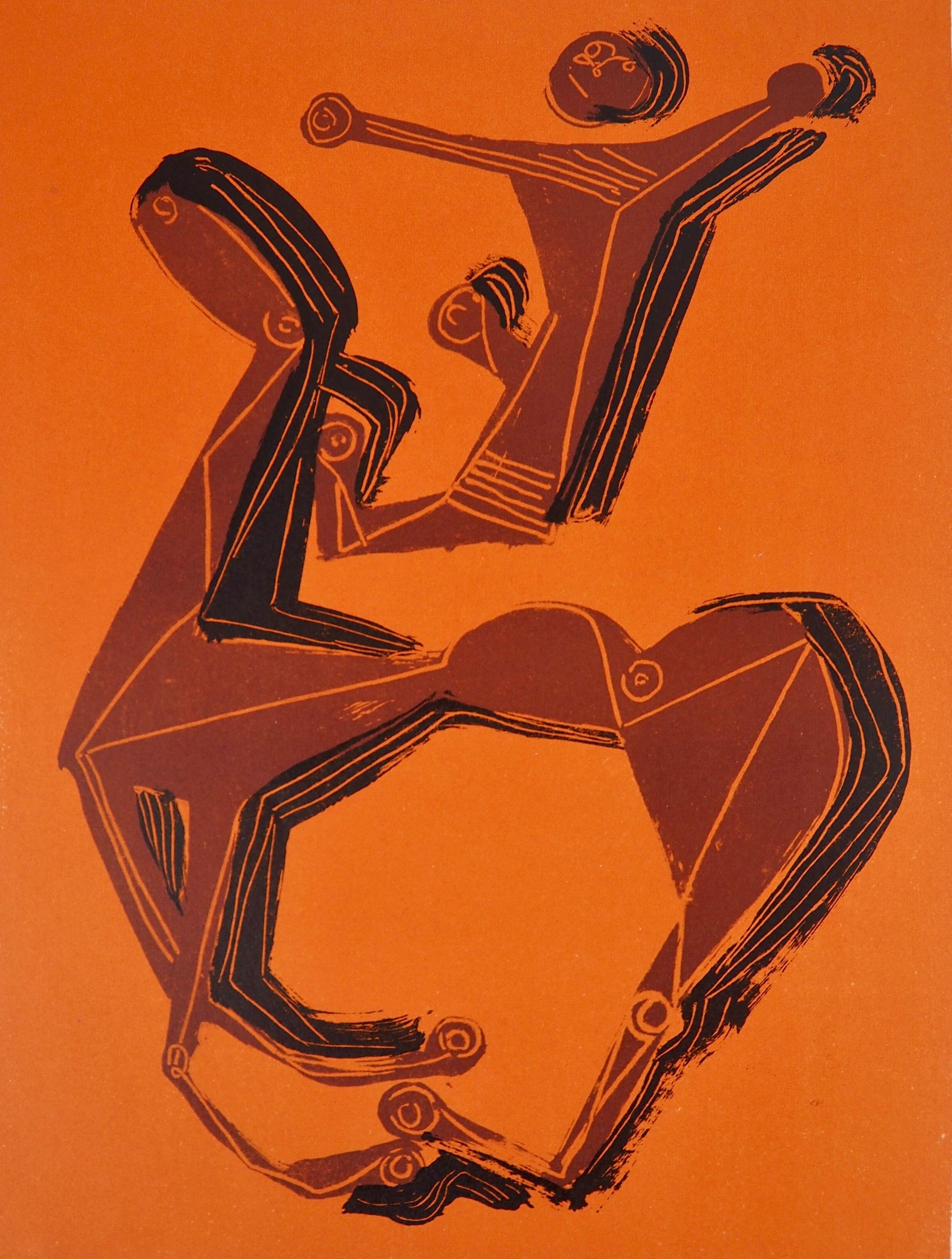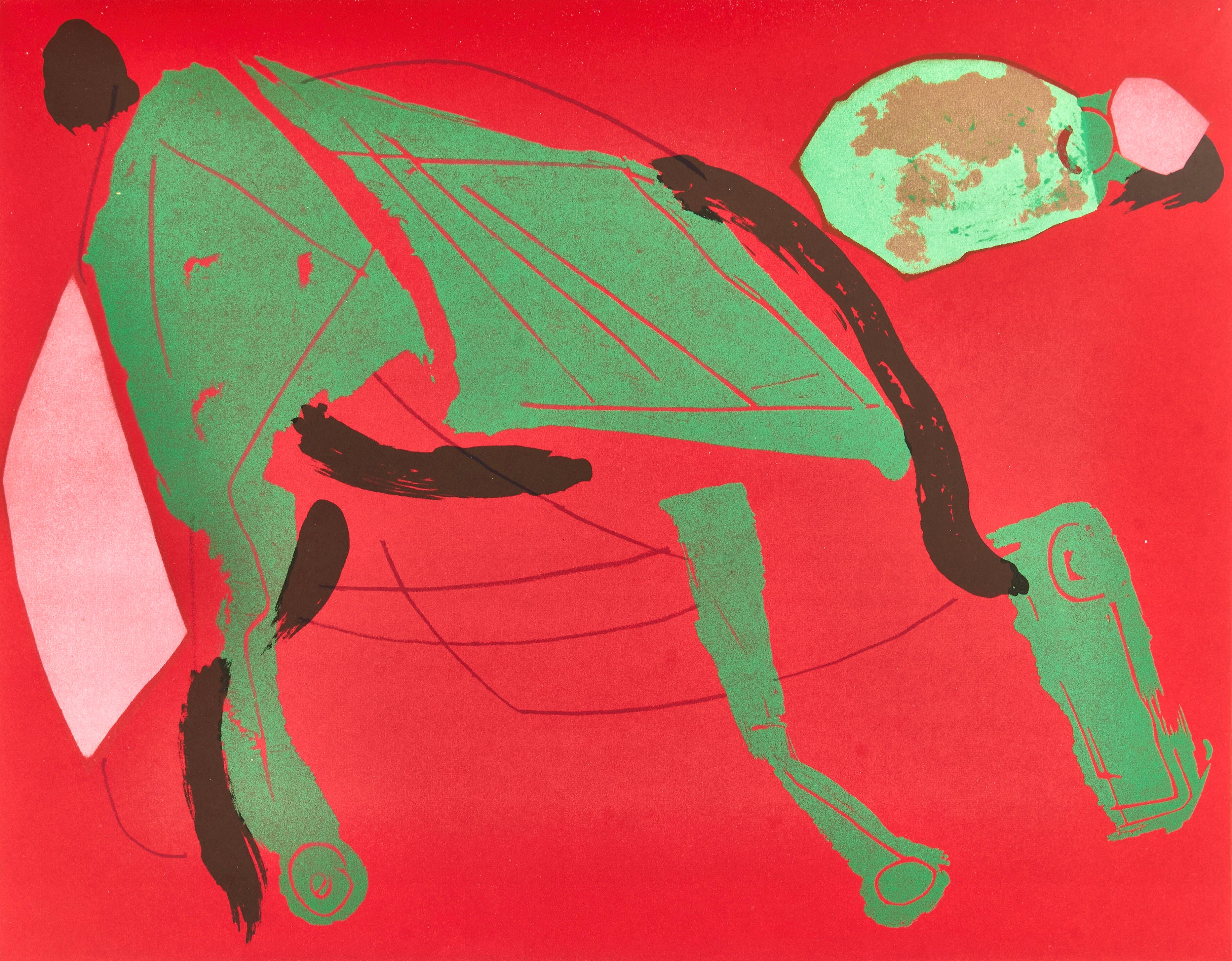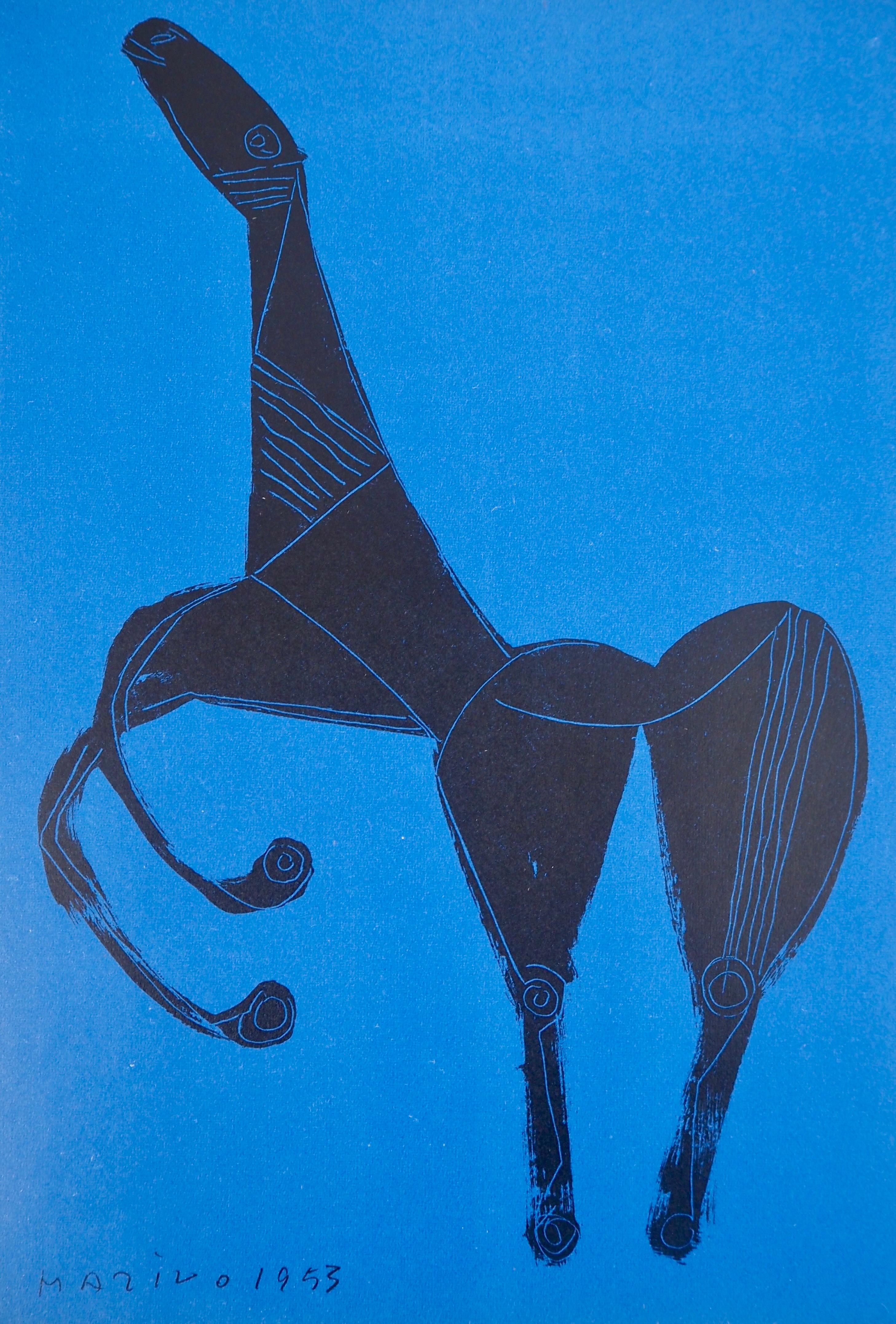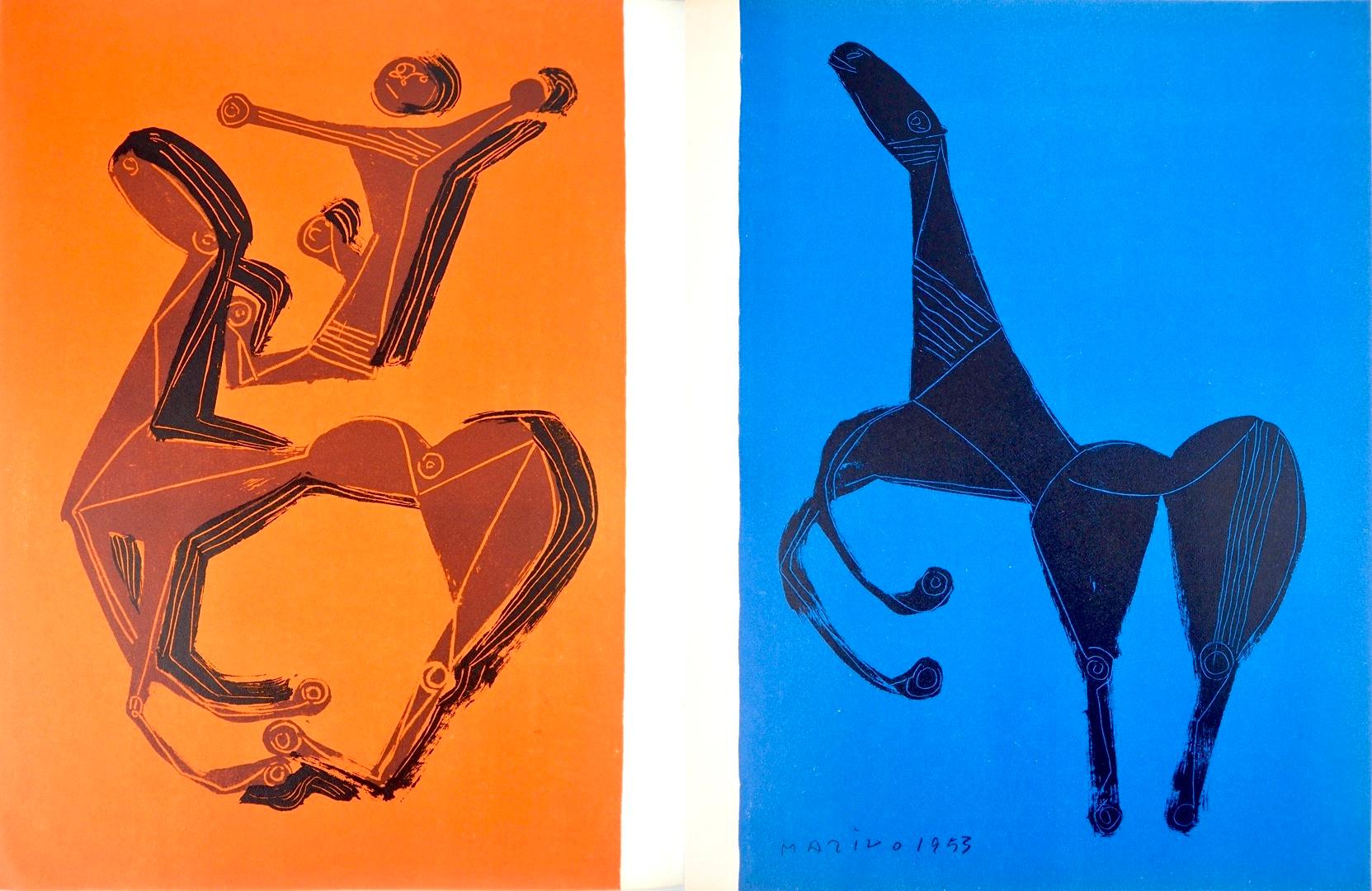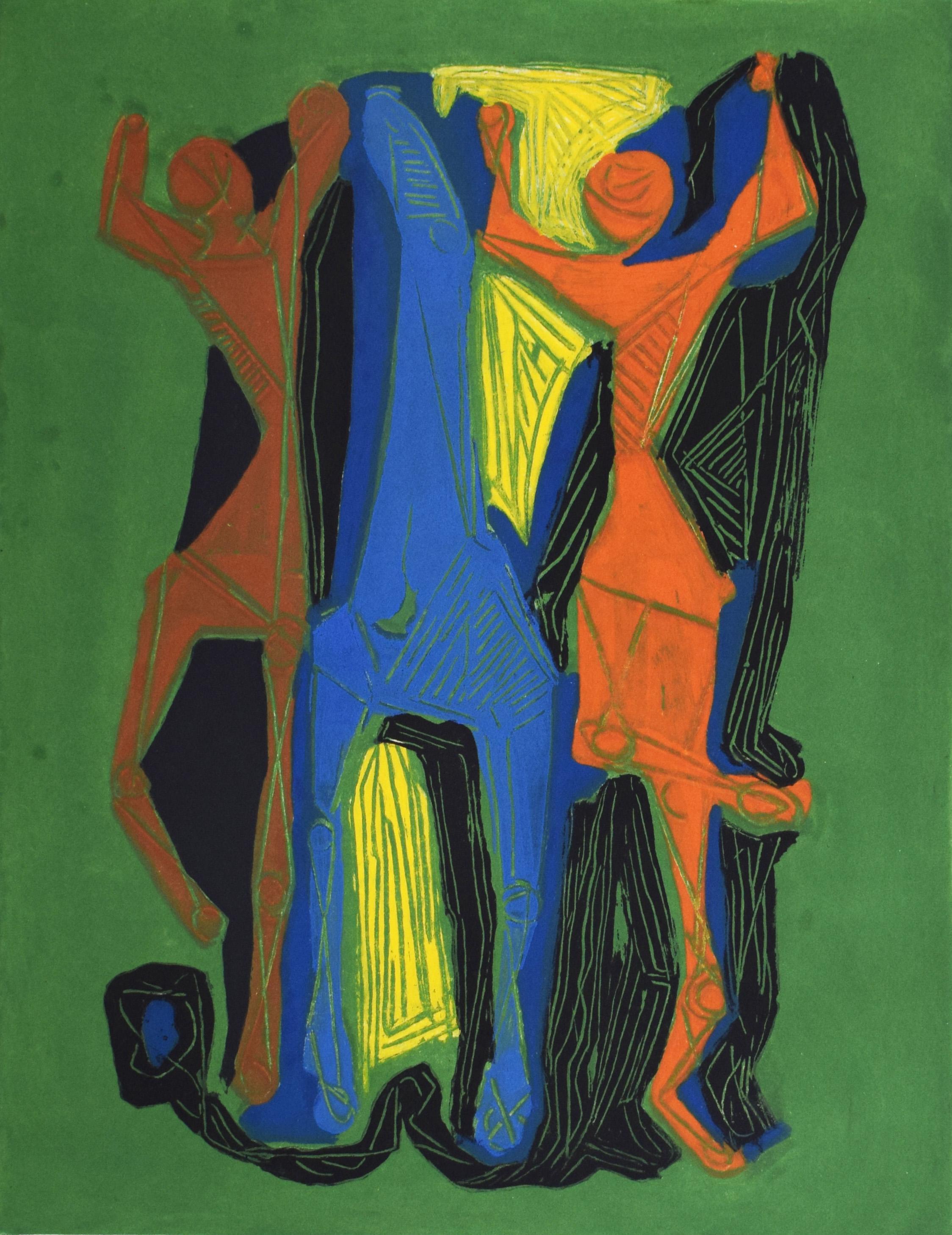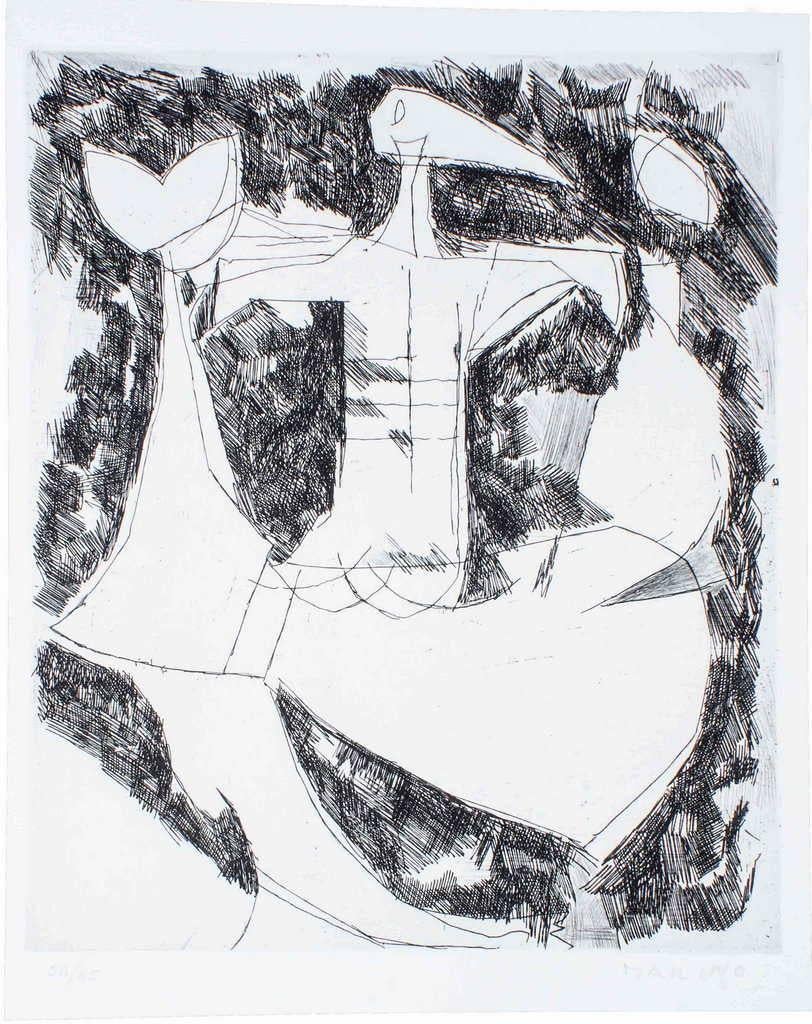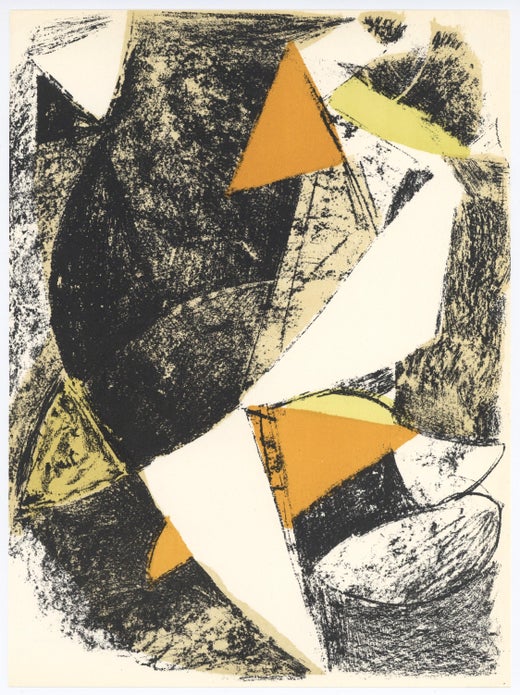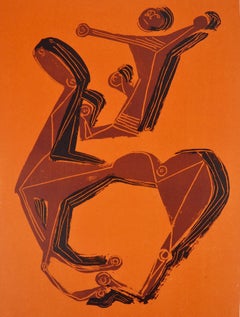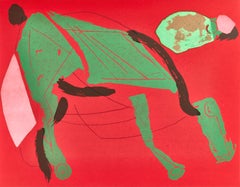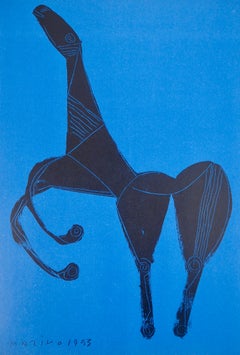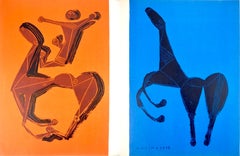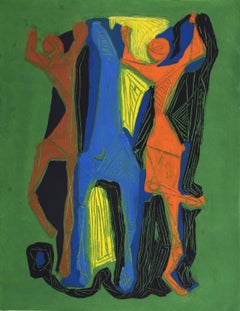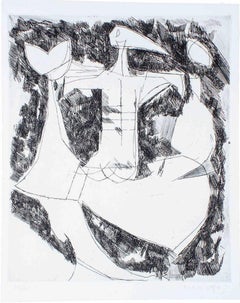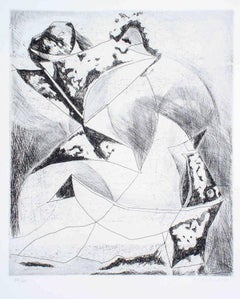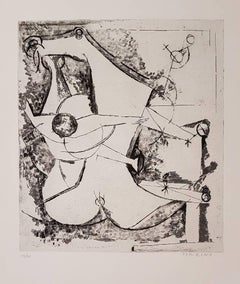Lithograph on vélin paper. Paper Size: 12.4 x 9.65 inches. Inscription: Unsigned and unnumbered, as issued. Notes: From the album, XXe siècle, Nouvelle série N° 1, Cahiers d'Art publiés sous la direction de Gualtieri di San Lazzaro, Nouveaux destins de l’art, 1951. Published by Société Internationale d'Art XXe siècle, Paris, under the direction of Gualtieri di San Lazzaro, éditeur, Paris; printed by Atelier Edmond et Jacques Desjobert, Paris, June 8, 1951. Excerpted from the album (translated from French), This issue was completed on June 8, 1951 on the presses of the l'Imprimerie Union. The shots were executed by the Maison Mansat. The layout was created with the technical collaboration of Mr. Ernest Scheidegger. It was printed separately on the presses of Edmond and Jacques Desjobert, XXV examples, numbered and signed by the artists, of the four original lithographs. Additional notes: Excerpted from the academic article, “Promoting Original Prints, The Role of Gualtieri di San Lazzaro and XXe Siècle” by Valerie Holman, published in Print Quarterly, XXXIII, 2016, 2, Until recently very little has been written on the Italian author and art publisher Gualtieri di San Lazzaro (1904-75), yet for 50 years he chronicled the life and work of contemporary artists, produced monographs of exceptional quality, and disseminated original prints by modern painters and sculptors through his best-known periodical, XXe Siècle. Although still a relatively unfamiliar figure in the United Kingdom, San Lazzaro is one of the half-dozen great art publishers of the mid-twentieth century who, together with his exemplar, Ambroise Vollard (1866-1939), and those of his own generation, Christian Zervos (1889-1970), Tériade (1889-1983) and Albert Skira (1904-73), chose to base himself in Paris, seeing it throughout his life as the centre of the art world….XXe Siècle, an illustrated periodical, was launched in 1938 and printed in editions of approximately 2,000, each issue containing both photographs and four-colour separation reproductions across a wide spectrum of visual imagery ranging from masterpieces of Western painting to popular prints from the Far East. Its large format, lively design, and close integration of text and image, were immediately striking, but its most innovative feature, introduced at the suggestion of Hans Arp (1886-1966), was the inclusion of original prints by contemporary artists in every issue. With obvious appeal for collectors, XXe Siècle was also designed to introduce a wider, international public to contemporary painting and sculpture through good quality colour reproductions and the immediacy of original prints. Comparable in price to Cahiers d'Art, early issues of XXe Siècle sold out rapidly. While San Lazzaro's own aesthetic preferences tended towards lyric abstraction, he made clear that XXe Siècle was non-partisan [publication ceased during World War II]….in 1951, San Lazzaro relaunched XXe Siècle with thematic issues that were materials based, or centred on a topic of current interest in the visual arts, particularly in Europe: concepts of space, matter, monochrome, mark-making and the sign.' A defining feature of the new series was Italy's artistic dialogue with France for, while San Laz-zaro had originally concentrated on Paris-based painters and sculptors, his aim was to create an international network, to make known the work of French artists in Italy and Italian artists in France, and subsequently extend this bilateral axis to the English-speak-ing world. The artists represented in No. I by an original print were all best known as sculptors: Arp, Laurens, Henry Moore (1898-186) and Marino Marini, San Lazzaro not only sought to show readers the full range of an artist's work, but to encourage the production of prints, a stimulus much appreciated, for example, by Magnelli…. Suffering from failing health, in 1968 San Lazzaro lost overall control of XXe Siècle to Léon Amiel, a printer-publisher who had provided financial backing and helped with distribution in America." Thematic issues now ceased and were replaced by a 'panorama' of the year, but San Lazzaro was still active as a publisher of books and albums of prints….Shortly after his death, San Lazzaro himself was the subject of two exhibitions: 'Omaggio a XXe Siècle' in Milan in December 1974 centred on graphic work by those artists closest to him late in life, while 'San Laz-zaro et ses Amis' at the Musée d'Art Moderne de la Ville de Paris in 1975 featured work by all those whose work he had promoted for more than 50 years: Arp, Calder (1898-1976), Capogrossi, Chagall, Sonia Delau-nay, Dubuffet, Estève, Lucio Fontana (1899-1968), Gili-oli (1911-77), Magnelli, Marini, Miró, Moore and Poliakoff. This exhibition was seen by one of his closest colleagues as an indirect portrait of San Lazzaro, a complex man whose modesty and reserve masked his unremitting drive to extend international appreciation of contemporary art, and to bring the reading public closer to its making through the medium of print.
MARINO MARINI (1901-1980) was an Italian sculptor, painter, draughtsman, printmaker and educator. Marini developed several themes in sculpture: equestrian, Pomonas (nudes), portraits, and circus figures. He drew on traditions of Etruscan and Northern European sculpture in developing these themes. His aim was to develop mythical images by interpreting classical themes in light of modern concerns and techniques. Marini is particularly famous for his series of stylised equestrian statues, which feature a man with outstretched arms on a horse. The evolution of the horse and rider as a subject in Marini's works reflects the artist's response to the changing context of the modern world. This theme appeared in his work in 1936. At first the proportions of horse and rider are slender and both are "poised, formal, and calm." By the next year the horse is depicted rearing and the rider gesturing. By 1940 the forms are simpler and more archaic in spirit; the proportions squatter. After World War II, in the late 1940s, the horse is planted, immobile, with neck extended, ears pinned back, mouth open. An example, in the Peggy Guggenheim Collection in Venice, is "The Angel of the City," depicting "affirmation and charged strength associated explicitly with sexual potency." In later works, the rider is, increasingly, oblivious of his mount, "involved in his own visions or anxieties." In the artist's final work, the rider is unseated as the horse falls to the ground in an "apocalyptic image of lost control" which parallels Marini's growing despair for the future of the world. In 2010, Marino Marini’s sculpture, Cavaliere sold for 7,138,206 USD at Christie's London, setting a world record for the artist.
